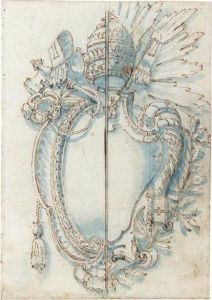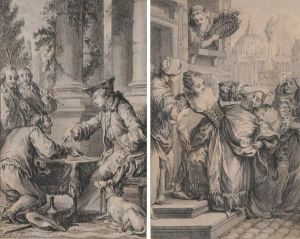Pierre-Philippe Choffard Paintings
Pierre-Philippe Choffard was a renowned French engraver and illustrator, born on July 10, 1730, in Paris, France. Choffard's artistic talent emerged at a young age, leading him to apprentice with the best engravers of his time, including Jean-Baptiste-Michel Wille. He was known for his mastery of the engraver's burin, the tool used to incise designs onto metal plates, which allowed for their impressions to be printed on paper.
Choffard's works were highly detailed and delicate, often exhibiting a Rococo style that was popular during his time. He produced illustrations for books and decorative prints that were sought after by the wealthy patrons of the arts. Beyond book illustrations, Choffard also engaged in creating designs for ornaments, vignettes, and various types of decorative prints. His engravings often depicted pastoral scenes, allegories, and classical motifs, reflecting the tastes of the French elite during the late 18th century.
Throughout his career, Choffard contributed to the illustration of numerous books, including an exquisite edition of the French poet Clément Marot's works. He is particularly celebrated for his work on the 'Fermiers généraux' edition of the 'Contes' by Jean de La Fontaine, published in 1762, which is considered one of the most beautifully illustrated books of the 18th century. His engravings for this book showcased his exceptional skill in creating intricate, balanced compositions that complemented the text.
Choffard's legacy is marked by the influence he had on book illustration and design. His meticulous attention to detail and his ability to enhance the literary works with his visual artistry have earned him a place among the notable figures in French engraving history. Pierre-Philippe Choffard passed away on August 7, 1809, in Paris. Even after his death, his body of work continues to be celebrated and studied for its aesthetic beauty and technical excellence.

